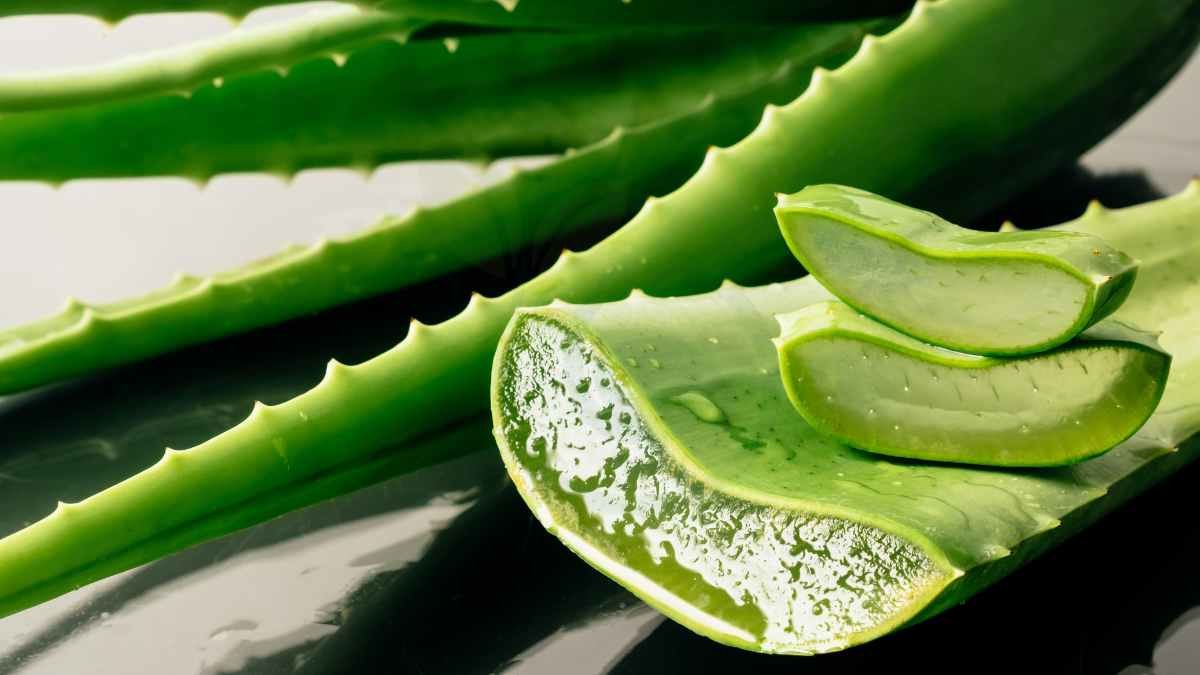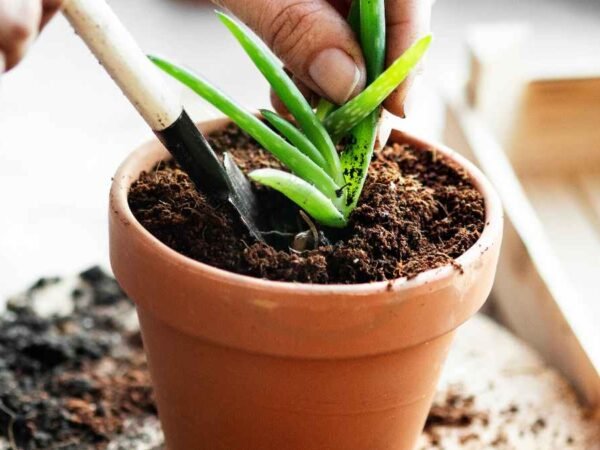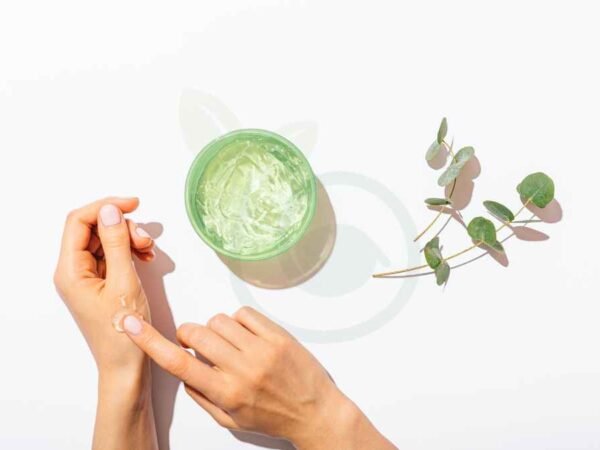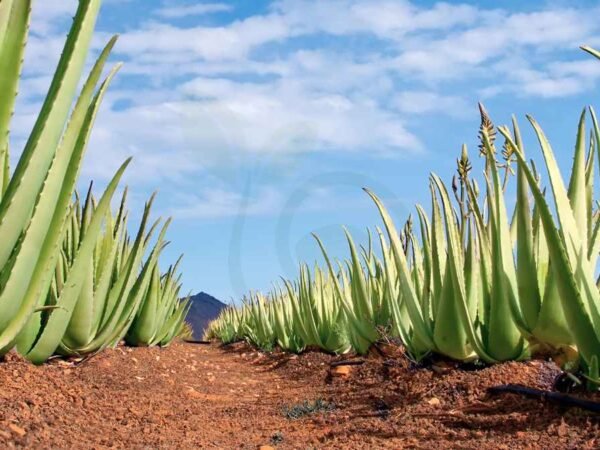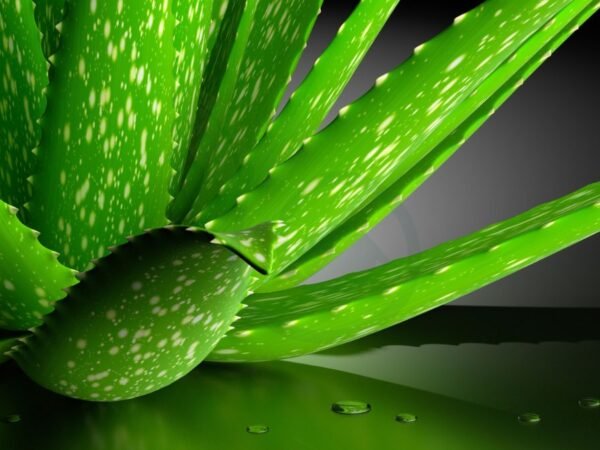Did you know that aloe vera, known for its healing properties, can be easily grown at home and used for various purposes? Learning how to properly cut an aloe vera leaf is essential to harness its benefits effectively. By following simple steps, you can access the gel inside the leaf, perfect for soothing sunburns, hydrating skin, and promoting overall wellness. This natural remedy has been trusted for centuries and continues to be a staple in many households due to its versatility and effectiveness.
Key Takeaways
- Handle healthy aloe leaves: Look for firm, plump leaves without discoloration for the best results.
- Prepare properly: Wash the leaf, gather necessary tools, and ensure a clean cutting surface.
- Cut with caution: Use a sharp knife to slice the leaf at an angle to avoid damaging the plant.
- Care after cutting: Allow the yellow sap to drain, rinse the leaf, and store it properly to maintain freshness.
- Utilize aloe vera: Apply the gel directly on skin for its soothing properties or incorporate it into DIY beauty products.
- Store correctly: Keep cut aloe leaves in the refrigerator or freeze the gel for long-term use.
Identifying Healthy Aloe Leaves
Spotting Good Leaves
When identifying healthy aloe leaves, focus on large mature leaves at the base of the plant. Look for leaves that are at least 3 inches long, ensuring they are ready for harvesting. Opt for thick and plump leaves, indicating a high concentration of gel.
Avoiding Damaged Areas
To ensure you are using the best aloe vera leaves, check for any discoloration or browning on the surface. Avoid leaves with visible damage or signs of pest infestations as they may affect the quality of the gel. It is crucial to only cut leaves that appear firm and healthy, guaranteeing optimal results.
Preparing for the Cut
Choosing Cutting Tools
Select a sharp serrated knife, garden snips, or sharp kitchen scissors for cutting. These tools ensure precise cuts without damaging the leaf. Opt for a tool that can easily reach the base of the aloe vera plant to avoid unnecessary strain.
Cleaning Tools
Clean your cutting tool with rubbing alcohol before harvesting to prevent infections. This step is crucial in maintaining the health of your aloe vera plant. Make sure the tool is completely dry before using it on the plant to prevent moisture-related issues. Regularly sanitizing your cutting tool is essential to ensure optimal plant health and growth.
Cutting Aloe Vera Leaf
Making Precise Cuts
Cut the leaf as close to the base of the plant to ensure maximum freshness and potency. This also helps in minimizing any potential damage to the rest of the plant. A straight cut is crucial as it prevents unnecessary harm to the remaining part of the leaf, promoting its overall health. Ensuring that the cut is clean and even is essential for fast healing and regrowth.
Steps to Avoid Plant Damage
Handle the aloe vera leaves with care to prevent any bruising or tearing, which can reduce their effectiveness. Twisting or bending the leaves during cutting should be avoided to maintain their integrity. When separating the leaf from the plant, be gentle to prevent any damage that could impact future growth or sap quality.
Post-Cutting Care
Cleaning the Cut Area
After cutting the aloe vera leaf, clean the cut end with a damp cloth to eliminate any remaining sap residue. This step is crucial to avoid skin irritation when using the gel. Allow the end to air dry completely before applying it to your skin for maximum effectiveness. Keeping the cut area free from debris is essential to prevent any potential contamination.
Caring for the Aloe Plant
When you've harvested a leaf, it's vital to ensure adequate sunlight and well-draining soil for your aloe plant. These conditions are necessary for the plant's overall health and growth. Remember to water the plant sparingly as over-watering can lead to root rot, which can be detrimental to its well-being. Avoid over-fertilizing the plant; aloe vera thrives best in nutrient-poor soil.
Using Cut Aloe Vera
For Cooking
Aloe vera's versatility extends beyond skincare; it can be a unique addition to your culinary adventures. Incorporate aloe vera gel into recipes to elevate flavors and boost health benefits. Experiment by adding the gel to smoothies, salads, or even savory dishes for a refreshing twist. Embrace the nutrient-rich properties of aloe vera in your cooking endeavors.
- Explore recipes: Dive into the world of aloe vera-infused dishes for a healthy and flavorful experience.
- Experiment with smoothies: Blend aloe vera gel with fruits and vegetables for a nutritious and revitalizing beverage.
- Discover health benefits: Uncover the various ways aloe vera can enhance your well-being through culinary creations.
Making Aloe Gel
To harness the goodness of aloe vera, start by extracting the gel from the leaf through a simple process. Cut the leaf lengthwise to reveal the transparent gel inside. Use a spoon or knife to carefully scoop out the gel, ensuring you collect as much as possible for topical application. For smoother consistency and easier application, consider blending the extracted gel before use.
- Extracting the gel: Slice open the aloe vera leaf lengthwise to access the beneficial gel within.
- Scooping out: Gently scoop out the gel using a spoon or knife, being mindful not to waste any of its valuable content.
- Blending for consistency: Opt for blending the gel to achieve a smoother texture ideal for topical applications.
Storing Aloe Vera Leaves
Short Term Methods
Aloe vera gel is a versatile remedy for various skin issues. Apply the freshly cut gel directly to minor burns to soothe and promote healing quickly. For sunburns and irritations, utilize aloe vera gel as a natural and effective solution. To ensure freshness, store any excess gel in an airtight container in the refrigerator for short-term use.
Long Term Solutions
For long-lasting benefits, consider incorporating aloe vera gel into your daily skincare routine. Regular use of aloe vera gel can significantly enhance skin hydration and elasticity over time. To ensure a continuous supply of fresh gel, think about planting an aloe vera plant at home as a sustainable source.
Tips for Aloe Vera Growth
Watering Practices
To maintain healthy aloe vera growth, water the plant sparingly, only when the soil is completely dry. Overwatering can lead to root rot, so ensure excess water drains out of the pot. Adjust your watering schedule based on the season and humidity levels to prevent waterlogging.
Sunlight and Soil Tips
For optimal growth, position your aloe plant in an area with bright, indirect sunlight. This helps prevent sunburn on the leaves. When repotting or planting new aloe vera, choose well-draining soil mixed with perlite or sand to improve drainage and avoid water retention issues. To ensure even growth, rotate the plant occasionally to provide consistent exposure to sunlight.
Crafting with Aloe Vera
DIY Aloe Recipes
Creating your own beauty products using aloe vera can be both fun and beneficial for your skin and hair. Explore various DIY face masks that incorporate aloe vera gel as a key ingredient. These masks can help soothe skin irritations and provide hydration.
Experiment with homemade hair treatments that feature aloe vera gel to nourish and strengthen your hair. Try mixing aloe vera with other natural ingredients like coconut oil or honey for added benefits. This can help restore moisture and shine to dull or damaged hair.
Delve into the world of DIY aloe vera lotions and creams to enhance your skincare routine. By combining aloe vera gel with essential oils or shea butter, you can create moisturizing products that are gentle on the skin. These homemade concoctions can aid in soothing sunburns or dry patches, leaving your skin feeling soft and rejuvenated.
Beauty Uses
Incorporating aloe vera gel into your beauty regimen offers numerous advantages. Use it as a natural moisturizer to hydrate the skin without clogging pores. Aloe vera's lightweight consistency makes it ideal for all skin types, including sensitive or acne-prone skin.
For makeup enthusiasts, consider using aloe vera gel as a primer before applying foundation. This helps create a smooth base for makeup application, allowing it to glide on effortlessly while also providing additional hydration to the skin.
Furthermore, explore the various benefits of aloe vera for hair care. Regular use of aloe vera can stimulate hair growth by nourishing the scalp and strengthening hair follicles. It also helps maintain scalp health by reducing dandruff and soothing any inflammation, promoting overall hair health.
Summary
You've learned how to identify healthy aloe leaves, prepare for the cut, and care for the plant post-cutting. Using aloe vera and even storing its leaves have been covered, along with tips for its growth and crafting possibilities. By following these steps, you can ensure that you make the most of your aloe vera plant and enjoy its benefits to the fullest.
Now it's time to put your knowledge into action. Grab your aloe vera leaf, follow the steps you've learned, and start reaping the rewards of this versatile plant in your daily life. Whether it's for skincare, health purposes, or creative projects, your aloe vera plant is ready to be a valuable addition to your routine. Stay curious and keep exploring new ways to incorporate aloe vera into your lifestyle!
Frequently Asked Questions
How can I identify healthy aloe leaves?
To identify healthy aloe leaves, look for firmness and vibrant green color. Avoid leaves that are brown, mushy, or discolored. Healthy leaves should be plump and turgid to the touch.
How should I prepare for cutting an aloe vera leaf?
Before cutting an aloe vera leaf, ensure your tools are clean and sharp. Wash your hands thoroughly. Lay out a clean surface for cutting and have a container ready to collect the gel.
What is the correct way to cut an aloe vera leaf?
To cut an aloe vera leaf, use a sharp knife to slice it as close to the base as possible. Trim off any spines along the edges. Cut the desired portion lengthwise or into smaller sections.
How do I take care of the aloe vera plant after cutting its leaf?
After cutting an aloe vera leaf, allow the yellow sap to drain for about 10-15 minutes before rinsing it with water. Let it dry before using or storing it. Ensure proper sunlight and watering for plant recovery.
What are some tips for growing healthy aloe vera plants?
For optimal growth, place your aloe vera plant in bright but indirect sunlight. Water sparingly, allowing the soil to dry out between waterings. Use well-draining soil mixtures and avoid overwatering to prevent root rot.
Can I use cut aloe vera for crafting purposes?
Yes, you can use cut aloe vera leaves for crafting projects like making natural skincare products or home decor items. The gel from the leaf can be incorporated into DIY face masks, lotions, or hair treatments for various benefits.
Image Source: Paid image from CANVA

